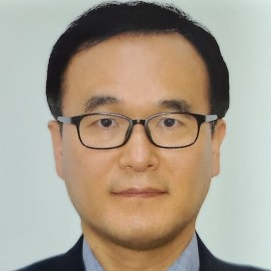Cell Reprogramming
A special issue of International Journal of Molecular Sciences (ISSN 1422-0067). This special issue belongs to the section "Biochemistry".
Deadline for manuscript submissions: closed (28 February 2018) | Viewed by 32450
Special Issue Editor
Interests: transplantation; signaling pathways in stem, cancer, and cancer stem cells; molecular mechanism of cellular reprogramming; apoptosis and autophagy; cancer stem cells; induced pluripotent stem cells; pancreatic beta-cell differentiation; pancreatic cancer cells
Special Issues, Collections and Topics in MDPI journals
Special Issue Information
Dear Colleagues,
Stem cells are defined as cells that have the capacity to perpetuate themselves through self-renewal and to generate mature cells of a specific tissue through differentiation. They are considered to be a promising tool for the treatment of patients experiencing serious degenerative and incurable diseases. Recently, there has been a significant turning point in the field of stem cells after the development of induced pluripotent stem cells (iPS cells) technology. Reprogramming of somatic cells is the hallmark of this technology, and also it can be derived for adult tissues, as well as from the patients’ tissue. Of note, iPS cells technology may overcome the hurdle of moral and ethical issues that arise from using human ES cells, as well as immune rejection. Cancer research also developed a new turn due to iPSC technology. The reprogramming of cancer cells is an interesting approach to the study of cancer-related genes and the interaction between these genes and the cellular microenvironment, before and after reprogramming, to explain the mechanisms of various stages of cancer development. Cancer cell reprogramming may be one of the ways to develop novel cancer treatments, as cancer cells may be converted into an immature or benign state. As normal stem cells and cancer cells share the capacity to self-renew, it seems reasonable to propose that newly-arising cancer cells appropriate the machinery for self-renewing cell division, which is normally expressed in stem cells. Evidence shows that many pathways that are classically associated with cancer may also regulate normal stem cell development. Signaling pathways associated with oncogenesis, metastasis, epithelial–mesenchymal transition (EMT), or mesenchymal–epithelial transition (MET), such as the Notch, Sonic hedgehog (Shh), Wnt, kinase, GPCR signaling pathways, may also regulate stem cell self-renewal.
In this Special Issue of IJMS, the focus will be on reprogramming somatic cells to stem cells or cancer stem cells, Reprogramming cancer cells or malignant cancer cells to normal or benign tumor cells, or signaling pathways regulating stem cell self-renewal or oncogenesis metastasis, epithelial–mesenchymal transition (EMT), or mesenchymal–epithelial transition (MET) in relation to new treatment options or other biological and medical applications.
Prof. Dr. Ssang-Goo Cho
Guest Editor
Manuscript Submission Information
Manuscripts should be submitted online at www.mdpi.com by registering and logging in to this website. Once you are registered, click here to go to the submission form. Manuscripts can be submitted until the deadline. All submissions that pass pre-check are peer-reviewed. Accepted papers will be published continuously in the journal (as soon as accepted) and will be listed together on the special issue website. Research articles, review articles as well as short communications are invited. For planned papers, a title and short abstract (about 100 words) can be sent to the Editorial Office for announcement on this website.
Submitted manuscripts should not have been published previously, nor be under consideration for publication elsewhere (except conference proceedings papers). All manuscripts are thoroughly refereed through a single-blind peer-review process. A guide for authors and other relevant information for submission of manuscripts is available on the Instructions for Authors page. International Journal of Molecular Sciences is an international peer-reviewed open access semimonthly journal published by MDPI.
Please visit the Instructions for Authors page before submitting a manuscript. There is an Article Processing Charge (APC) for publication in this open access journal. For details about the APC please see here. Submitted papers should be well formatted and use good English. Authors may use MDPI's English editing service prior to publication or during author revisions.
Keywords
- cell reprogramming of somatic cells
- stem cells
- cancer stem cells
- Reprogramming of cancer cells
- malignant cancer cells
- normal or benign tumor cells
- signaling pathways regulating stem cell self-renewal and oncogenesis
- self-renewal
- oncogenesis
- metastasis
- epithelial–mesenchymal transition (EMT)
- mesenchymal– epithelial transition (MET)EMT/MET
Related Special Issue
- Cell Reprogramming, II in International Journal of Molecular Sciences (10 articles)






